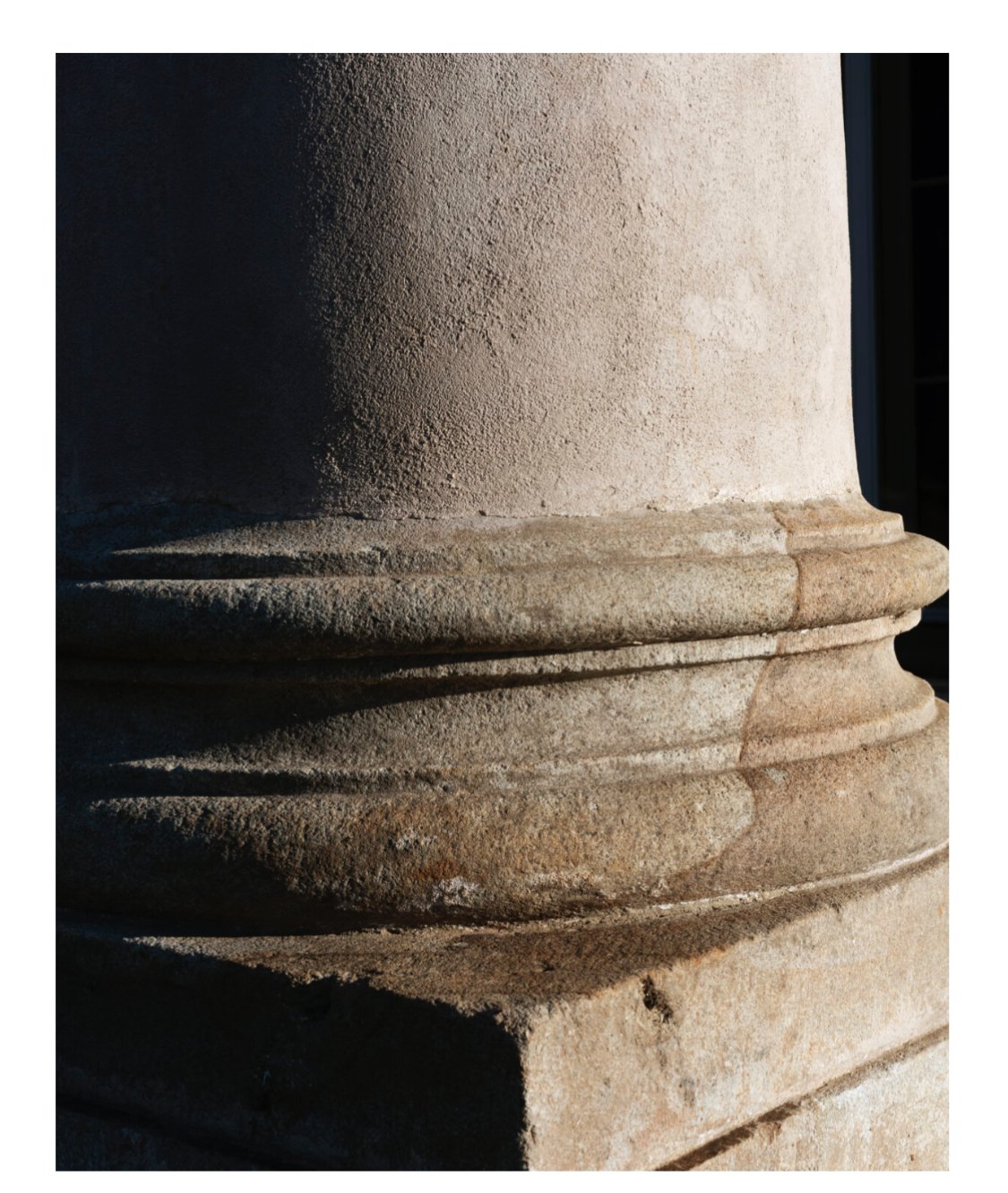DANNIELLE BOWMAN
Image: Dannielle Bowman, A Column on the West Portico of Thomas Jefferson’s Mansion , Monticello, VA
© Dannielle Bowman
This is a photograph of a column on the West portico steps of Thomas Jefferson’s Monticello estate, just outside of Charlottesville, VA. On the November 2019 day I made this picture, I was at Monticello on assignment from The New York Times Magazine, working on photographs for ‘The 1619 Project’. I had been to Monticello once before as a 5th grader all the way from California on a school trip to visit east coast landmarks of U.S. history. I remember feeling intrigued but apprehensive and eventually angry about the Monticello visit. I remember a white friend who claimed lineage to Jefferson apologizing to me on behalf of her ancestors because they owned slaves, my ancestors, she reminded me. I remember being unsure of what to do with that, so I left it with her and instead focused on the impressive shade of blue – ‘Wedgwood Blue’ – the dining room was painted at the time. Now it is an equally impressive and more historically accurate shade of yellow. I think that heinous Sally Hemmings made for TV movie had come out that year. I don’t remember if any Monticello officials mentioned her, or the movie. I remember being relieved to leave.
I don’t remember much else about my 5th grade trip – just the dining room. And the clocks; Jefferson had somewhat of an obsession with timekeeping, clocks and calendars.
20 years later, on that November 2019 visit, the clocks were just as interesting as they had been before. I was disappointed to find that the dining room was no longer blue, but I had a developed a different, less visible, point of focus. In the bright yellow dining room, and all over the estate, Jefferson went to great lengths to hide the slave labor that ran the estate. In that yellow dining room, there was an elaborate system of gadgets, devices, pulleys and dumbwaiters built into the architecture to keep the visibility of slaves to a minimum. But how could the people who built that place be hidden from view when their fingerprints are literally in its bricks, visible still? Ask a tour guide to show you.
I touched those fingerprints and the column pictured here to touch an object that had been touched by an enslaved craftsman. His name was Thrimston Hern. He was trained by John Gorman, a quarryman and mason, to be a “tolerable good stone cutter.”* At the time Hern made the column he was not much older than I was when I photographed it. Hern was later sold for a sum of $600 to the University of Virginia Proctor Arthur Brockenbrough.
In photographing Hern’s work, I hope the marks of his labor, the truth of his labor, can be seen.
*quoted from a letter from Martha Jefferson Randolph to Thomas Jefferson Randolf, ca 12 June 1823.
This is a Digital Wonderings made for TRUST, f/stop Leipzig by Susan Bright and Nina Strand.
